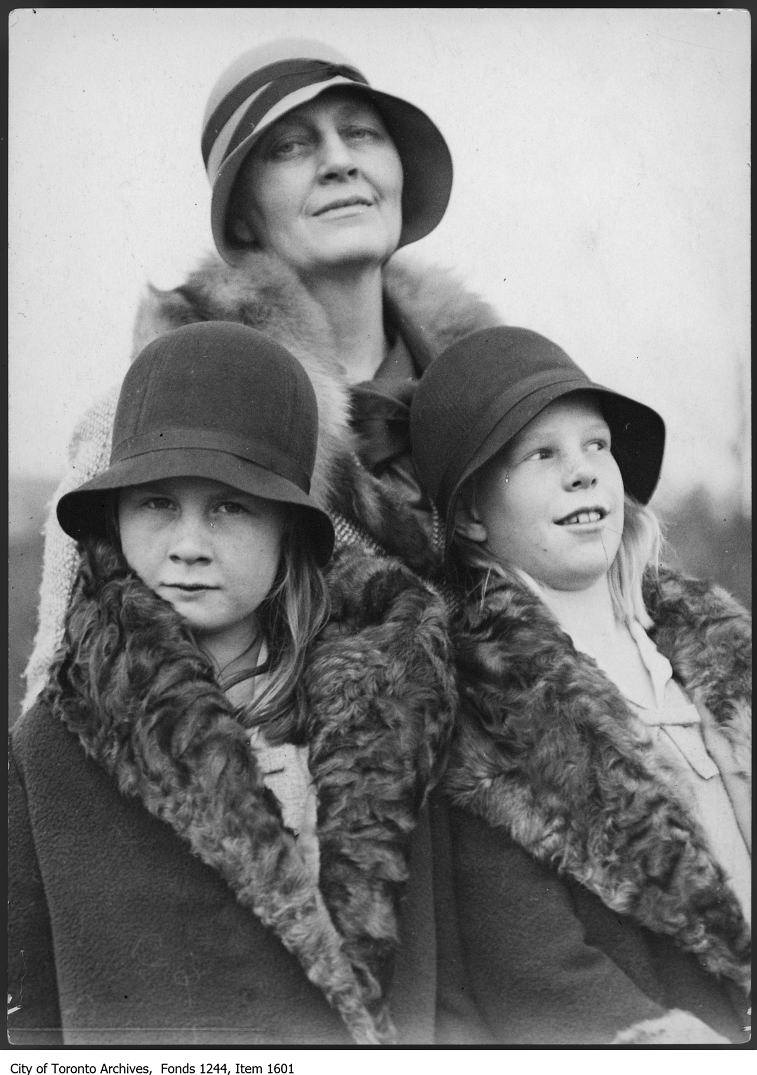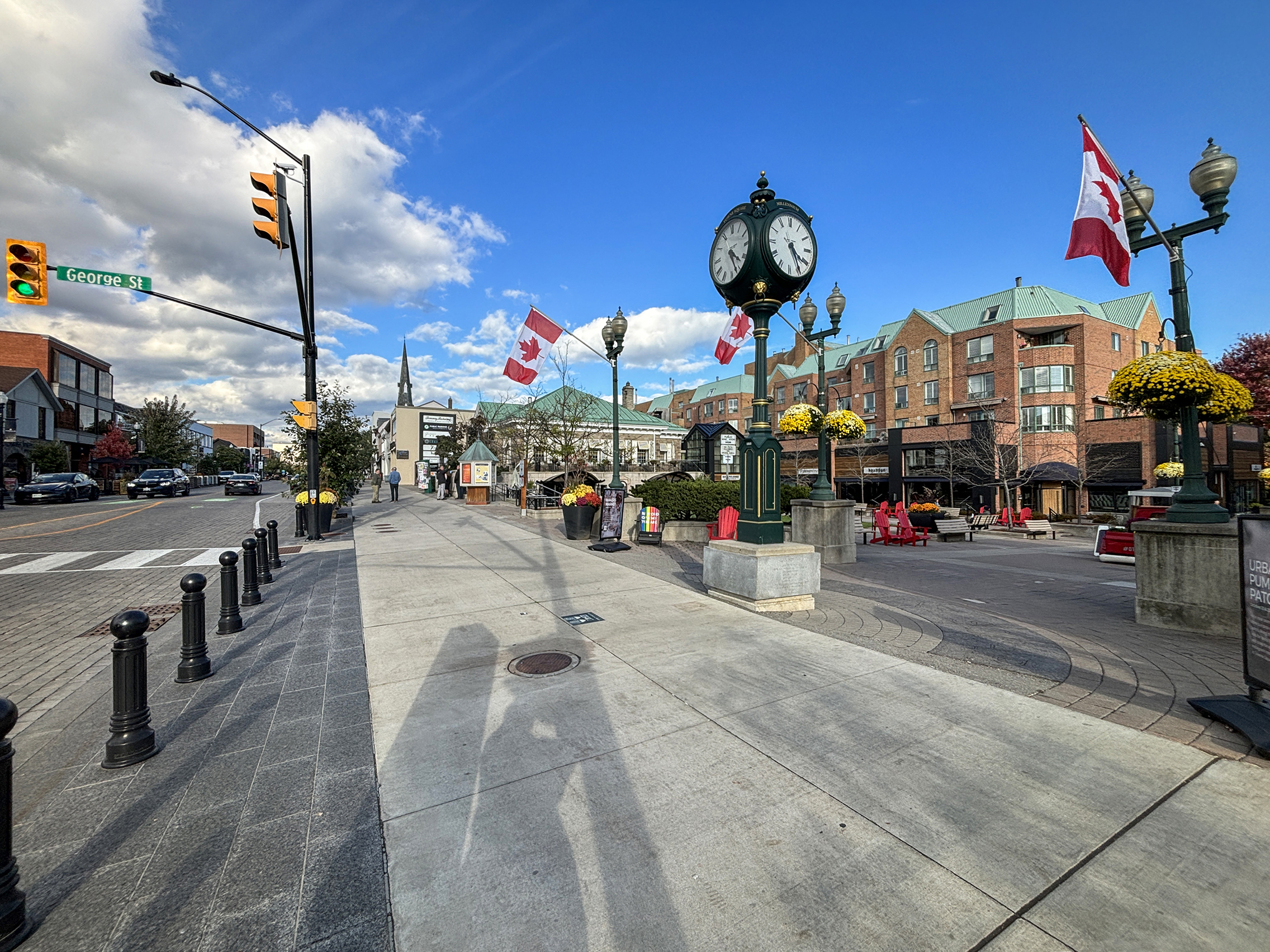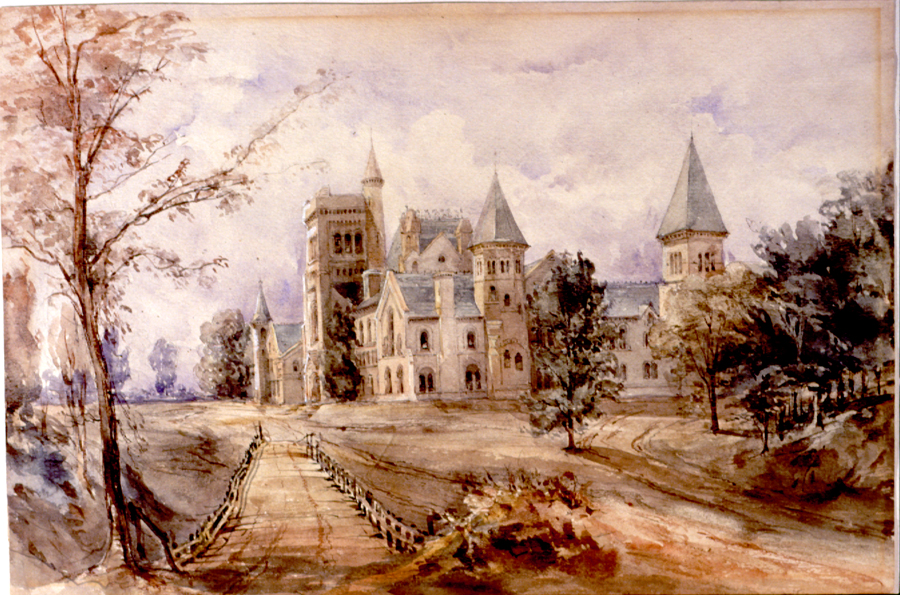|
Frank Wickson
Alexander Frank Wickson (March 30, 1861 – December 22, 1936) was a prominent Toronto architect who was responsible for the design of numerous buildings, including Timothy Eaton Memorial Church, the IOOF Hall (Toronto) and the "Ardwold" mansion for the Eaton family. He was president of the Ontario Association of Architects in 1900 and of the Royal Architectural Institute of Canada from 1918 to 1920. Early life and education Frank Wickson was born in Toronto on March 30, 1861, to John and Eliza Wickson. He received his education at Jarvis Collegiate, Upper Canada College and the Ontario School of Art. Following this, he became an apprentice at the architectural firm of Smith and Gemmell and lived for a time in Buffalo, New York. He later become a junior member of the Darling and Curry architectural firm. Architectural career In 1890, Wickson formed a partnership with Norman Bethune Dick, another Toronto architect, as the firm of Dick and Wickson. Buildings designed by Dick a ... [...More Info...] [...Related Items...] OR: [Wikipedia] [Google] [Baidu] |
Flora Eaton
Sarah Evelyn Florence "Flora", Lady Eaton, (''née'' McCrea; November 26, 1879 – July 9, 1970) was a Canadian socialite, philanthropist and nurse. As the wife of Sir John Craig Eaton, who inherited the Eaton's department store business, she was a member and later matriarch of the prominent Eaton family. Early life and family She was born in 1879 in the village of Omemee, Ontario, a small community in Victoria County (today part of the City of Kawartha Lakes), approximately 23 km (14 mi) west of Peterborough. She was the youngest of eight children born to Irish Protestant immigrants – John McCrea, a cabinetmaker, and Jane McNeely. She moved to Toronto and became a nurse, first at Toronto General Hospital then at Rotherham House, a private hospital on Sherbourne Street. While working at Rotherham House, she met John Craig Eaton, a patient who was a younger son of Eaton's department store founder Timothy Eaton. The two were married in Omemee on May 8, 1901. They ... [...More Info...] [...Related Items...] OR: [Wikipedia] [Google] [Baidu] |
Forest Hill, Toronto
Forest Hill is a neighbourhood and former village in Midtown Toronto, Ontario, Canada, located north of Downtown Toronto. The village was amalgamated into Toronto in 1967 and the area has retained its name as a neighbourhood. Along with other neighbourhoods such as Rosedale, Toronto, Rosedale and Bridle Path, Toronto, The Bridle Path, it is one of Toronto's wealthiest neighbourhoods, with an average income, among income recipients 15 or older in private households, of $157,600 in Forest Hill South and $89,700 in Forest Hill North, compared to the $59,250 average income in Toronto's Census Metropolitan Area and $54,450 in Canada as a whole. History Forest Hill was originally incorporated as a village in 1923, and later amalgamated by the province into the City of Toronto in 1967, along with the Village of Swansea, Toronto, Swansea. The village was named after the summer home of John Wickson, the father of Toronto architect Frank Wickson; previously, it had been known as Spadina H ... [...More Info...] [...Related Items...] OR: [Wikipedia] [Google] [Baidu] |
Joseph Flavelle
Sir Joseph Wesley Flavelle, 1st Baronet (February 15, 1858 – March 7, 1939) was a Canadian businessman. Life and career Joseph Wesley Flavelle was born on February 15, 1858, in Peterbough, Canada West, to John and Dorothea (Dundas) Flavelle. He married Clara Ellsworth in 1882. By the 1890s, Flavelle had made his fortune in the meatpacking business as president of William Davies Company, which was the British Empire's largest pork packing firm. He subsequently became prominent in finance and commerce as chairman of the Bank of Commerce, National Trust and Simpson's department stores. Flavelle was chairman of the Imperial Munitions Board during World War I, and it was for reorganizing the industry that he was awarded a baronetcy in 1917. His was the last British hereditary title to be granted in the normal course to a Canadian citizen, due to the passage of the Nickle Resolution in 1919. Flavelle died on March 7, 1939, in Palm Beach, Florida. He left his Queen's Park mans ... [...More Info...] [...Related Items...] OR: [Wikipedia] [Google] [Baidu] |
Oakville, Ontario
Oakville is a town and List of municipalities in Ontario#Lower-tier municipalities, lower-tier municipality in Regional Municipality of Halton, Halton Region, Ontario, Canada. Generally seen as a commuter suburb of Toronto, it is located on Lake Ontario between Toronto and Hamilton, Ontario, Hamilton. In the 2021 Canadian census the town had a population of 213,759, with an estimated 233,700 people as of 2024, making it List of towns in Ontario, Ontario's largest town. Oakville is part of the Greater Toronto Area, the largest urban area in Canada. History In 1793, Dundas Street was surveyed for a military road. In 1805, the Legislative Assembly of Upper Canada bought the lands between Etobicoke and Hamilton, Ontario, Hamilton from the indigenous Mississaugas people, except for the land at the mouths of Bronte Creek, Twelve Mile Creek (Bronte Creek), Sixteen Mile Creek (Halton Region), Sixteen Mile Creek, and along the Credit River. In 1807, British immigrants settled the area sur ... [...More Info...] [...Related Items...] OR: [Wikipedia] [Google] [Baidu] |
Alumnae Theatre
The Alumnae Theatre, known most often as The Alum, is the oldest theatre society in Toronto, Ontario, Canada still in operation. It was founded in 1918 by female graduates of the University of Toronto who wanted to continue to participate in semi-professional theatre after graduation. Originally all performers in all roles were female, but in the 1920s the society began to invite male guest performers to join the performances. Still today the leadership of the society remains entirely female. Its mission has always been to produce the great plays of the western canon, while also sometimes doing more modern works, such as the Toronto premier of one of Carol Shields' works. The society originally performed at the university's Hart House Theatre. In 1957 the society renovated an old coach house, and opened the Coach House Theatre. In 1962 the theatre moved again into a former synagogue on Cecil and Huron streets. In 1970 they were evicted from this location when the site was expropr ... [...More Info...] [...Related Items...] OR: [Wikipedia] [Google] [Baidu] |
Calvin Presbyterian Church
Calvin Presbyterian Church is a Presbyterian Church in Canada congregation in the Deer Park area of Toronto, Ontario, Canada. The church building is located at 26 Delisle Avenue, close to Yonge Street and St. Clair Avenue. History The congregation began as a "Minority Group" from nearby Deer Park Presbyterian Church (subsequently Deer Park United Church) that voted against joining the United Church of Canada in 1925. First known as "Hill District Presbyterians", they later named their congregation after Reformation leader John Calvin. The church building was designed in 1926 by the firm of Wickson and Gregg. Calvin Presbyterian is part of the Churches on the Hill group, an ecumenical association of congregations, including Deer Park United, that meet regularly for study, fellowship, and local pursuits. Senior Ministers * The Rev. Dr. Joseph Wasson, 1926–1955 * The Rev. Dr. Douglas Herron, 1956–1985 * The Rev. Dr. Kendrick Borden, 1987–2000 * The Rev. Ian A.R. McDonald ... [...More Info...] [...Related Items...] OR: [Wikipedia] [Google] [Baidu] |
Uruguay
Uruguay, officially the Oriental Republic of Uruguay, is a country in South America. It shares borders with Argentina to its west and southwest and Brazil to its north and northeast, while bordering the Río de la Plata to the south and the Atlantic Ocean to the southeast. It is part of the Southern Cone region of South America. Uruguay covers an area of approximately . It has a population of almost 3.5 million people, of whom nearly 2 million live in Montevideo metropolitan area, the metropolitan area of its capital and List of cities in Uruguay, largest city, Montevideo. The area that became Uruguay was first inhabited by groups of hunter gatherer, hunter gatherers 13,000 years ago. The first European explorer to reach the region was Juan Díaz de Solís in 1516, but the area was colonized later than its neighbors. At the time of Spanish colonization of the Americas, European arrival, the Charrúa were the predominant tribe, alongside other groups such as the Guaraní people ... [...More Info...] [...Related Items...] OR: [Wikipedia] [Google] [Baidu] |
Montevideo
Montevideo (, ; ) is the capital city, capital and List of cities in Uruguay, largest city of Uruguay. According to the 2023 census, the city proper has a population of 1,302,954 (about 37.2% of the country's total population) in an area of . Montevideo is situated on the southern coast of the country, on the northeastern bank of the Río de la Plata. A Portuguese garrison was established in the place where today is the city of Montevideo in November 1723. The Portuguese garrison was expelled in February 1724 by a Spanish soldier, Bruno Mauricio de Zabala, as a strategic move amidst the Spanish people, Spanish-Portuguese people, Portuguese dispute over the Río de la Plata Basin, platine region. There is no official document establishing the foundation of the city, but the "Diario" of Bruno Mauricio de Zabala officially mentions the date of 24 December 1726 as the foundation, corroborated by presential witnesses. The complete independence from Buenos Aires as a real city was not ... [...More Info...] [...Related Items...] OR: [Wikipedia] [Google] [Baidu] |
University Of Toronto
The University of Toronto (UToronto or U of T) is a public university, public research university whose main campus is located on the grounds that surround Queen's Park (Toronto), Queen's Park in Toronto, Ontario, Canada. It was founded by royal charter in 1827 as King's College, the first institution of higher learning in Upper Canada. Originally controlled by the Church of England, the university assumed its present name in 1850 upon becoming a secular institution. It has three campuses: University of Toronto Mississauga, Mississauga, #St. George campus, St. George, and University of Toronto Scarborough, Scarborough. Its main campus, St. George, is the oldest of the three and located in Downtown Toronto. U of T operates as a collegiate university, comprising 11 #Colleges, colleges, each with substantial autonomy on financial and institutional affairs and significant differences in character and history. The University of Toronto is the largest university in Canada with a t ... [...More Info...] [...Related Items...] OR: [Wikipedia] [Google] [Baidu] |
Koffler Student Centre
The Koffler Student Centre is the main student centre at the University of Toronto's St. George campus, located at 214 College Street. The centre houses a number of different student services, including the main campus bookstore, career centre, and health clinic. The ornate building is located at the northwest corner of St. George and College Street streets in a building that was formerly the home of the Toronto Reference Library. History The building was opened in 1909 as the Toronto Public Library's Central Reference Library, Ontario's largest Carnegie library. It remained the home of the reference library until 1977, when it relocated to its current home at Bloor and Yonge. The building was then acquired by the University of Toronto, converted into the student services centre, and renamed after university supporter Murray Koffler of Shoppers Drug Mart. Architecture Designed by Alfred H. Chapman, the Beaux Arts building features a grand entrance fronting College Street by ... [...More Info...] [...Related Items...] OR: [Wikipedia] [Google] [Baidu] |
Paris, Ontario
Paris (2021 population, 14,956) is a community located in the County of Brant, Ontario, Canada. It lies just northwest from the city of Brantford at the spot where the Nith River empties into the Grand River (Ontario), Grand River. Paris was voted "the Prettiest Little Town in Canada" by Harrowsmith Country Life, ''Harrowsmith'' Magazine. The town was established in 1850. In 1999, its town government was amalgamated into that of the County of Brant, ending 149 years as a separate incorporated municipality, with Paris as the largest population centre in the county. History Paris was named for the nearby deposits of gypsum, used to make plaster of Paris. This material was discovered in 1793 while the area was being surveyed for the British Home Department. By late 1794 a road had been built from what is now Dundas, Ontario, to the east bank of the Grand River in what became Paris, called The Governor's Road (now Dundas St. in Paris). The town has been referred to as "the cobblest ... [...More Info...] [...Related Items...] OR: [Wikipedia] [Google] [Baidu] |



